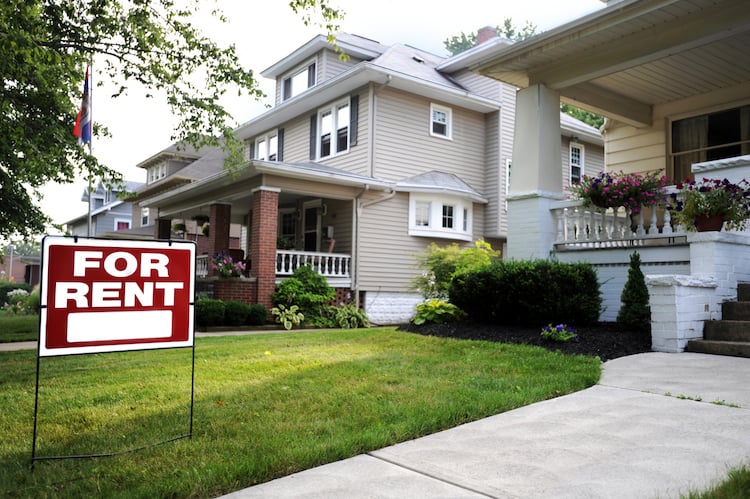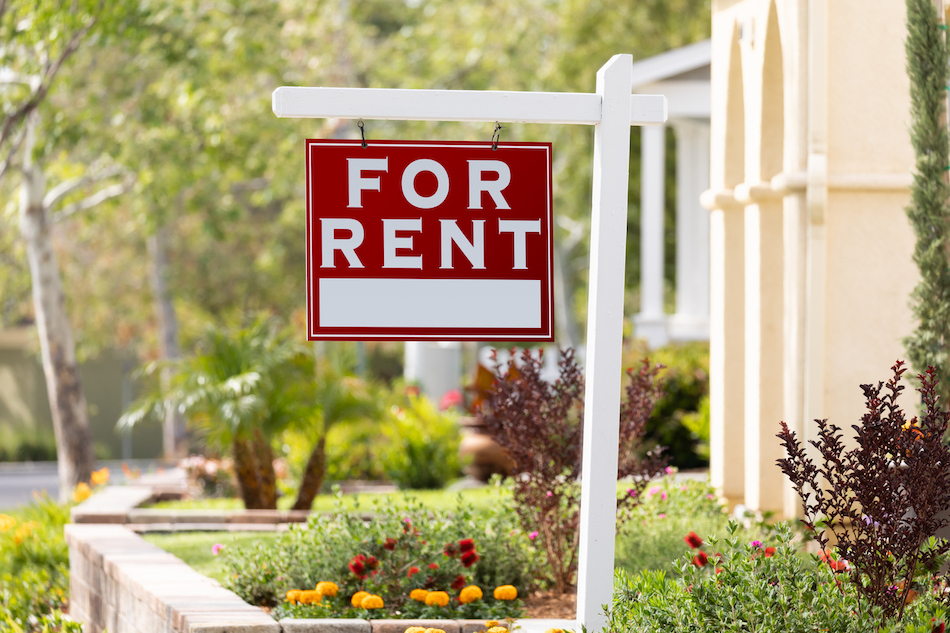The political economist John Stuart Mill once said, “Landlords grow rich in their sleep without working, risking or economizing.”
Investors who purchase rental property put capital to work today with the goal of building more wealth for tomorrow.
Of course, there’s a lot more to investing in real estate than just buying a house and renting it out. The potential profits from owning a rental property must be greater than the operating expenses and taxes, and it’s important to invest in the right place at the right time.
That’s why we’ve put together this comprehensive guide to rental property 101 to help you decide if real estate is the right investment for you.
Key Takeaways
- Rental property generates money through cash flow, additional income, appreciation, and tax savings.
- Single-family rentals (SRFs) is an asset class attracting growing amounts of capital from mom-and-pop, home developers, and institutional investors.
- Financing for a rental property can be obtained in a variety of ways, including conventional and VA loans, private money lenders, and self-directed IRAs.
- Tenant screening, leasing, and property management are some of the key responsibilities associated with owning and operating a rental property.
- Real estate investors analyze potential returns from a rental property using a number of different metrics, including cash flow, cash-on-cash return, NOI, cap rate, and appreciation.
How to Make Money with Rental Property
There are four ways buy-and-hold investors make money with rental property:
1. Cash Flow
Cash flow is generated from tenant rent payments every month. While there’s no guarantee that prices will always go up, rents for single-family homes recently have seen the largest gains in nearly 15 years.
2. Additional Income
Additional recurring income generated from pet rent, roommate rent, appliances rental, laundry fees, and storage fees can boost the bottom line. In a real estate market where rental houses are trading at a 6% cap rate, generating $50 per month in extra net operating income can increase the value of a property by $10,000.
3. Appreciation
The sales price of houses sold in the U.S. have historically increased over the long term. In fact, according to the Federal Reserve, home prices have grown by nearly 80% since the Global Financial Crisis of 2007-2009.
4. Depreciation
One of the many tax benefits investors receive by owning rental property is the depreciation expense. Depreciation is a non-cash deduction owners of investment real estate use to reduce taxable net income. Residential property is depreciated over a period of 27.5 years. That means a home worth $150,000 can generate a write-off of $5,454 per year to reduce income generated from rent.

Types of Residential Rental Property
Real estate investors lease rental property to a tenant over a set period of time. A residential lease can be short term, such as a vacation rental or a month-to-month lease, or more commonly with a one-year contract that can be renewed.
There are several types of residential rental property that real estate investors purchase:
- Single-family rental homes
- Multifamily buildings with four units or less
- Condominiums and cooperatives
- Townhomes
- Mobile homes
Over the last few years, single-family rental (SFR) homes have been attracting significant investment capital from smaller investors, real estate developers, and large institutional buyers.
For example, Roofstock (the #1 marketplace for buying and selling single-family rental homes) has completed more than $3 billion in SFR transactions in less than six years. Recently, the company teamed up with leading American builder Lennar Homes to allow investors to buy high quality, US build-to-rent real estate from anywhere in the world.
There are several reasons why so many investors are purchasing single-family homes to rent:
- Appreciation potential
- Consistent cash flow possibility
- Higher average rents compared to multifamily
- Power of leverage with easier financing
- Diversify SFR investments across primary, secondary, and tertiary markets
- Lower entry price
- Tax benefits with deduction of operating expenses, owner expenses, depreciation, and more
- Value-add improvements can force appreciation and help boost returns
- Strong demand for single-family rental homes is pushing occupancy levels to all-time highs
Risk and Rewards of Investing in Rental Property
While there are plenty of powerful reasons for investing in rental property, the asset class may not be right for everybody. Here are some of the risks and potential rewards to consider before buying a home and leasing it to a tenant:
Rewards
- Income generated by rent collected from a tenant after all of the expenses have been paid.
- Appreciation may help to increase return on investment over the long term.
- Tax benefits, such as deduction of operating expenses, owner expenses, and depreciation.
- Income earned from rental property is generally not subject to Social Security and Medicare taxes the way that self-employment income is.
Risks
- Choosing the right area to invest in (such as a secondary or tertiary real estate market) requires time and effort to avoid buying an undesirable rental property.
- Cash flow is not always consistent from one month to the next, due to fluctuating factors like vacancy rates and repairs.
- Tenants can create problems, which is why landlords often use online services to screen tenants and collect rent or hire a local property manager to handle the day-to-day details.
- Real estate markets have historically moved in cycles, which are hard to predict and can create risk for short-term investors who fix-and-flip if the market suddenly turns.
Financing Rental Property
Although investment property loans have stricter requirements than a mortgage on an owner-occupied property, financing a rental property can still be relatively easy.
Lenders usually ask for a down payment of around 25%, and interest rates and fees are slightly higher when compared to a loan on a primary residence. The Stessa Mortgage Center helps investors save time and money with a free rate quote to purchase a property or refinance an existing loan.
Options for Financing a Rental Property
- Conventional conforming loans from Fannie Mae and Freddie Mac.
- FHA financing for small multifamily buildings.
- VA financing for owner-occupied multifamily properties.
- Blanket mortgage loans used to finance multiple rental properties with a single loan.
- Portfolio mortgages where multiple loans are originated by the same lender.
- Private money lending from professionals who invest in real estate debt.
- Self-directed IRA using retirement savings to invest in real estate.
Tips for Qualifying for a Rental Property Loan
- Maintain a good credit score to increase eligibility, get lower fees, and better interest rates.
- Make a down payment of at least 20%.
- Keep money in a CapEx (capital expense) account for major repairs.
- Budget for higher interest rates on a rental property loan compared to a primary residence.
- Consider a fixed rate mortgage to make monthly loan payments predictable.
- Shop around for a lender who knows how to work with real estate investors.
Choosing an Investment Strategy
There are three main strategies used for investing in real estate. Each one works in a different way to help real estate investors successfully achieve their goals:
Core
A core strategy features investment in homes that are newly-built or completely renovated and are typically found in neighborhoods with the best ratings and school districts. Prices are higher, but risks are generally lower and returns may be more predictable:
- Includes fully updated turnkey rental homes already leased to tenants.
- Located in neighborhoods with the best ratings and school districts.
- Returns are often described as “bond like” with predictable monthly income.
- Lower return in exchange for a lower level of risk.
Value-Add
A value-add strategy seeks to increase potential cash flow and force appreciation by creating additional revenue streams, updating, and adding rentable square footage. Value-add homes are usually found in in neighborhoods with average and above-average ratings:
- Properties may need minor repairs and cosmetic updating to increase rents or add value.
- Located in above-average and average neighborhoods and school districts.
- Often compared to investing in a growth stock or higher-risk, higher-yielding bond.
- Balanced blend of risk and potential return.
Opportunistic
Fix-and-flip property, wholesale homes, and cash cow rental property are three examples of opportunistic real estate investments.
Investors willing to accept a higher level of risk in exchange for a potentially big reward if the market timing is right wholesale or flip. On the other hand, “cash cow” properties are often located in below-average areas where potential appreciation is low but recurring cash flow is relatively predictable and strong:
- Minimal increase in property value or income even if updating is done.
- Found in average and below-average neighborhoods and school districts.
- Relatively reliable cash flow streams due to demand from tenants looking for affordable rents.
- Greater risk of tenant turnover and property damage offset by generally solid and predictable cash flows.

What to Look for in a Good Rental Property
Not every house, townhome, or condo makes a good real estate investment. Here’s what real estate investors look for when choosing a good rental property:
- Located in a real estate market where population and job growth is strong, and the cost of living and doing business is affordable.
- Market where good single-family homes are available to meet the increasing demand from renter-occupied households.
- Good amenities, such as updated flooring and fixtures, extra room for working from home, outdoor space, and landscaping that is easy to care for.
- Property that is the median size for the neighborhood (in terms of square footage, number of bedrooms and bathrooms) will generally appeal to the widest range of tenants.
Houses that have never been rented before sometimes make the best investments.
This simple spreadsheet by Roofstock provides an easy way to view the potential financial performance of a given property. You can use it to forecast the potential return of a property. Simply enter some information to view projected key return on investment (ROI) metrics, including cash flow, cash-on-cash return, net operating income, and cap rate.
Tenant Screening Tips
The potential cost of evicting a tenant for non payment of rent or damaging the property can range between $4,000 and $7,000. That’s one reason why landlords screen tenants to help select the best tenants.
How to Screen a Tenant in 6 Steps
- Determine minimum tenant requirements using benchmarks, such as credit score, income level, and rental history.
- Use a complete rental application that includes questions about current and past employers, monthly income and debt payments, and personal references.
- Run a background check, credit report, and rental history.
- Verify employment by calling the applicant’s current employer to verify income level and length of employment.
- Speak with former landlords to learn if they would rent to the tenant again.
- Interview the tenant in person, and ask them to bring their pet along if the rental property is pet friendly.
Top Online Tenant Screening Services
- American Apartment Owners Association (AAOA) pricing begins at $19.95.
- Avail offers a full suite of tenant screening reports starting at $30.
- E-Renter has tenant screening packages ranging from $21.95 to $36.95.
- LeaseRunner provides tenant screening and online leasing with à la carte pricing beginning at $12.
- MyRental serves independent rental property owners and managers with one-time fees starting at $24.99 per applicant.
- MySmartMove provides tenant screening reports in just minutes from TransUnion.
- RentPrep tenant screening packages begin at $18.95 and include a full range of reports.
- TurboTenant is designed for investors or property managers with multiple rental properties with a flat fee for unlimited properties beginning at $15 per month.
How a Lease Agreement Works
The lease agreement describes the rights and responsibilities of both the landlord and tenant. According to the legal resource website Nolo.com, there are 10 terms every landlord should include in a lease or rental agreement:
- Names of all tenants and occupants
- Description of rental property
- Term of tenancy
- Rental price
- Security deposits and fees
- Repair and maintenance policies
- Landlord’s right to enter rental property
- Rules and important policies
- Contact information
- Required landlord disclosures, such as lead-based paint addendum
Lease agreements are state-specific and must comply with landlord-tenant laws and the Fair Housing Act. A local property management company, real estate association, and online sources such as eForms and the LawDepot are all good places to find a residential lease agreement.

Choosing the Right Property Management Company
While some people prefer to manage a property themselves, often rental property investors leave the daily details to a professional property manager. Property management is becoming increasingly complex, and it’s easy for someone not in the business to quickly become overwhelmed with tenants, vendors, and local and federal housing laws.
What Property Managers Do
- Create an operating budget in conjunction with the owner
- Set fair market rent with research and rent comparables
- Market vacant space for lease
- Screen tenants, draw up, and sign the lease
- Collect rent when due and make scheduled disbursements to the owner
- Conduct periodic inspections including move-in and move-out, interior and exterior inspections, and drive-by inspections
- Maintain the property in good operating condition with proactive maintenance and prompt repairs
- Handle all tenant issues promptly when they arise
- Manage finances and record-keeping, and provide monthly and annual operating statements to the owner
6 Ways to Find a Great Property Manager
- Ask for referrals
- Review property management companies online
- Follow a standard interview process
- Verify certifications and licenses
- Review and understand the property management agreement
- Ask for references from prospective property management companies
Read more on finding a property manager here.
Rental Property Financial Metrics
Every investor has different expectations for a rental property. Some hope for a quick profit with a fix-and-flip, while other investors buy and hold to earn recurring income and appreciation over the long term.
However, every real estate investing strategy employs the same financial metrics:
Cash Flow
Cash flow is money left over at the end of each month, after the operating expenses and mortgage have been paid and money has been set aside in a CapEx account for future repairs:
- Cash Flow = Gross Rental Income - Expenses
Cash-on-Cash Return
Cash-on-cash return measures the percentage of annual cash flow to the amount of cash invested. The higher the cash-on-cash return is, the better a rental property is performing financially:
- Cash-on-Cash Return = Annual Cash Flow / Cash Invested
Net Operating Income
Net operating income (NOI) is similar to cash flow, but doesn’t factor in mortgage or interest payments in order to provide an idea of the true potential returns on a rental property without the use of leverage:
- NOI = (Rental Income + Other Income) – (Vacancy Losses + Operating Expenses)
Cap Rate
A cap rate indicates the return on investment (ROI) of a rental property without a mortgage. The cap rate calculation is only used when comparing similar properties in the same market, because returns can and do vary from one real estate market to the next:
- Cap Rate = NOI / Property Value or Price
Appreciation
Most real estate investors view appreciation as a bonus profit. That’s because there’s no guarantee that home prices will continue to rise, although recently they’ve been doing quite well.
According to Zillow, the value of a typical home increased by over 15% last year and is forecasted to grow by more than 13% over the next year. Factors affecting how much houses increase or decrease in value include:
- Primary, secondary, or tertiary real estate market
- Population and job growth
- Diversification of the local economy
- Percent of rent-occupied households
- Transportation, infrastructure, and amenities
- Cost of living
- Property taxes and state income taxes
- Pro-business government
Internal Rate of Return
Internal rate of return (IRR) measures the potential return on an investment over the entire holding period, while taking into account the time value of money (TVM). That’s important, because the longer it takes to receive money, the greater the risk is that something could go wrong.
However, one of the drawbacks to the IRR calculation is that it depends on accurately forecasting future cash flows and a property sales price several years down the road. When used in combination with other financial metrics, IRR is still a useful calculation to do by using an online calculator such as IRR Calculator or the Roofstock Cloudhouse Rental Calculator.
Wrapping Up
Investing in rental property can generate potential returns in four ways: recurring income, additional income, appreciation over the long term, and reduced taxes with depreciation expense.
Although the demand for good rental property from investors and tenants continues to grow, not every home makes a good rental. That’s why many investors enroll in the Roofstock Academy to learn how to build income through real estate investing.









